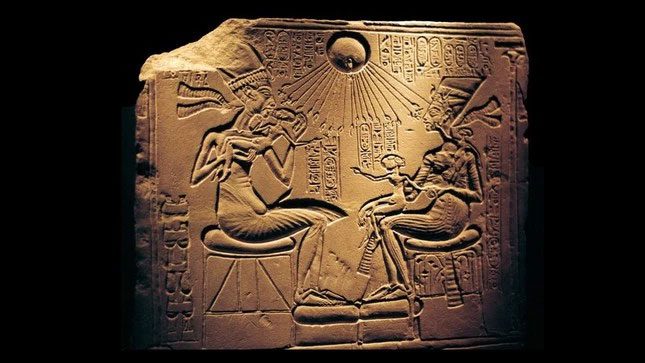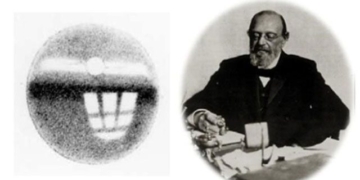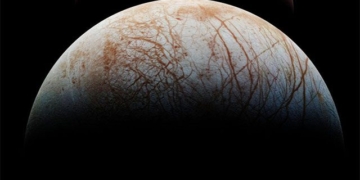Tutankhamun, commonly known today as King Tut, was an ancient Egyptian pharaoh buried in a lavish tomb filled with gold artifacts in the Valley of the Kings. His tomb was discovered in 1922 by an archaeological team led by British Egyptologist Howard Carter. This burial site was entirely created by the Egyptians.
King Tut is sometimes referred to as “the boy king” because he ascended to the throne at the age of 9 or 10, during the 14th century BC. He died about a decade later. His tomb, filled with treasures, was found nearly intact, which is remarkable considering that most tombs in the Valley of the Kings had been looted since ancient times.

King Tutankhamun ascended to ancient Egypt at the age of 9 or 10, in the 14th century BC, and died about a decade later. (Photo: Romilly Lockyer via Getty Images)
The discovery of his tomb in 1922 captured global attention and made King Tut a household name.
Despite the opulence of Tutankhamun’s tomb, historical and archaeological evidence suggests that this young pharaoh was frail and spent his brief reign dismantling a religious revolution initiated by his father, Akhenaten.
Son of Akhenaten, a Revolutionary
King Tut, born Tutankhamen, was born in ancient Egypt around 1341 BC. His father, Akhenaten, was a revolutionary pharaoh who attempted to centralize Egypt’s polytheistic religion around the worship of the sun disk, Aten. With his zeal, Akhenaten ordered the destruction or defacement of the names and images of other Egyptian gods. He also established a new capital at Tell el-Amarna. Akhenaten was condemned after his death; Anna Stevens, an Egyptologist at Monash University in Australia, wrote about this in her book.
The identity of Tutankhamen’s biological mother is unclear but is likely not the chief wife of Akhenaten, Queen Nefertiti—although Egyptologists continue to debate this, Bob Brier, an Egyptologist at Long Island University, noted in his book “Tutankhamun and the Tomb that Changed the World” (Oxford University Press, 2022).
Tutankhamun took the throne around 1332 BC. Due to his young age, the young king would have relied heavily on advisors. Brier writes: At some point, he changed his name from Tutankhamen to Tutankhamun, removing the word “aten”—a reminder of his father’s revolutionary religious efforts—and replacing it with “amun“. This name belonged to an important Egyptian deity that some Egyptians regarded as the king of the gods. This change illustrated King Tut’s departure from his father’s religious reforms, restoring Egypt to its previous polytheistic beliefs.
Tutankhamun condemned his father’s actions on a stele found at Karnak, near modern-day Luxor, stating that Akhenaten’s religious revolution had caused the gods to abandon Egypt. This act may have helped him consolidate his power.

A relief depicting King Akhenaten, Queen Nefertiti, and their children, alongside the sun disk, Aten (Photo: UniversalImagesGroup / Contributor).
Who Was King Tut’s Wife?
Tutankhamun married his half-sister, Queen Ankhesenamun, and their twin daughters were stillborn; their fetuses were buried in jars in the pharaoh’s tomb. The couple left no heir to the throne. Queen Ankhesenamun’s tomb has yet to be discovered.
Surviving letters indicate that after Tut’s death, Ankhesenamun attempted to maintain the throne, even writing to Suppiluliuma I, the Hittite king in Anatolia, requesting one of his sons to marry her. Ankhesenamun ultimately had to marry the official Ay, who became pharaoh.
What Did King Tut Look Like?
A 2010 study of King Tut’s remains published in the JAMA journal revealed that he was about 1.67 meters tall and suffered from many ailments, including malaria and Kohler disease, a rare foot bone disorder. Archaeologists also found several canes in Tutankhamun’s tomb, indicating that the pharaoh sometimes had difficulty walking.
Despite these health issues, he may have worn armor—though it is still unclear whether he fought in battle himself. An analysis in 2018 of leather armor found in Tutankhamun’s tomb suggested that the armor had been worn.
Hutan Ashrafian, a clinical lecturer in surgery at the Royal London University, stated that Tutankhamun may have walked with a limp, had a slightly elongated skull, a somewhat enlarged chest (due to a condition known as gynecomastia, caused by hormonal imbalance), protruding teeth, and was relatively thin.
How Old Was King Tut When He Died?
The young king died around 1323 BC, at about 18 years of age. His death may have been unexpected, and his tomb appeared to have been completed in haste. In 2011, Ralph Mitchell, then a professor of applied biology at Harvard University, helped analyze brown spots in the tomb. These spots turned out to be remnants of bacteria that once grew on the walls, possibly due to the paint still being wet when the pharaoh was buried.
How Did King Tut Die?
The circumstances surrounding King Tut’s death have been a topic of debate among scholars. Egyptologists have proposed numerous theories over the years. In a JAMA article, one research team suggested that a combination of malaria and necrosis (tissue death) from a broken left foot may have caused his death.
Despite Tutankhamun’s health issues, historical and archaeological evidence indicates that he attempted to remain active, and the broken bone may have resulted from an accident while hunting.
Where Is King Tut’s Tomb Located?
King Tut was buried in a lavish tomb in the Valley of the Kings, near modern-day Luxor. This valley contains the tombs of many pharaohs who lived during the New Kingdom period (around 1550 to 1070 BC) in Egyptian history. During this time, Egypt ceased constructing pyramids for pharaohs and instead buried them in this valley. Security concerns related to tomb robbing may have been a reason for the pharaohs’ burial in the valley.
What Is Inside Tutankhamun’s Tomb?
Carter’s team discovered the entrance to the tomb on November 4, 1922, and entered it on November 26.
Carter and his team found that the tomb contained countless untouched treasures. The stunning treasure collection included: two strange black ebony figures of a king, wearing golden sandals, holding a scepter and mace, emerging from the cloak of darkness; long benches gilded in bizarre shapes, lion heads, Hathor heads, and mythical creatures…
Among many other treasures was a dagger made of iron from a meteorite and a throne with two lions facing outward as if guarding the throne.
Among the discoveries was the mummy of Tutankhamun. In a 2013 study published in the journal Études et Travaux, Salima Ikram, an Egyptologist at the American University in Cairo, suggested that returning Egypt to traditional polytheistic beliefs was crucial for Tutankhamun and his advisors, so he requested to be mummified in this manner, an unusual practice to emphasize his close association with Osiris, the god of the underworld.
Ikram noted that Tutankhamun’s skin was soaked in oil after his death, causing it to turn black. His heart was also removed, although Egyptians typically did not remove hearts. Additionally, his penis was mummified at a 90-degree angle, which is unusual.
In mythology, Osiris had black skin, powerful regeneration capabilities, and a heart that had been hacked into pieces by his brother Seth.
However, the large amount of flammable oil caused Tutankhamun’s mummy to ignite shortly after burial.
While King Tutankhamun’s wealth is astonishing, the tomb is unusually small for a pharaoh’s burial, with a total volume of 277m3, as noted by the Theban Mapping Project website. King Tut’s tomb consists of a corridor, burial chamber, antechamber, and two rooms now referred to as “the annex” and “the treasury”.
The tomb may be small because the pharaoh died unexpectedly and at a young age, leaving no time to excavate a larger tomb. It is possible that the tomb was not originally intended for any pharaoh at all.
King Tutankhamun’s Golden Mask
The most iconic treasure in King Tut’s burial chamber is his death mask, made of gold along with inlaid glass and stone. “The mummy mask of Tutankhamun was made from two solid gold sheets inlaid with glass, faience [glazed pottery], and semi-precious stones” and weighs 10.2 kg, Susan Allen, a senior research scholar at the Metropolitan Museum of Art, wrote in her book “The Tomb of Tutankhamun: The Excitement of Discovery” (Met Publications, 2006).
Allen noted that resin and oil were poured over this mask along with the rest of the mummy. As the resin and oil cooled, they darkened and hardened.
What is the Curse in King Tut’s Tomb?
Within months of the discovery of King Tutankhamun’s tomb in 1922, the sponsor of the excavation, George Herbert, the 5th Earl of Carnarvon in England, fell ill and passed away. It didn’t take long for people to question whether the “curse of the mummy” had caused the earl’s fate. The press fueled the legend that opening Tutankhamun’s tomb had awakened a deadly curse that claimed the lives of those involved in its discovery.




















































